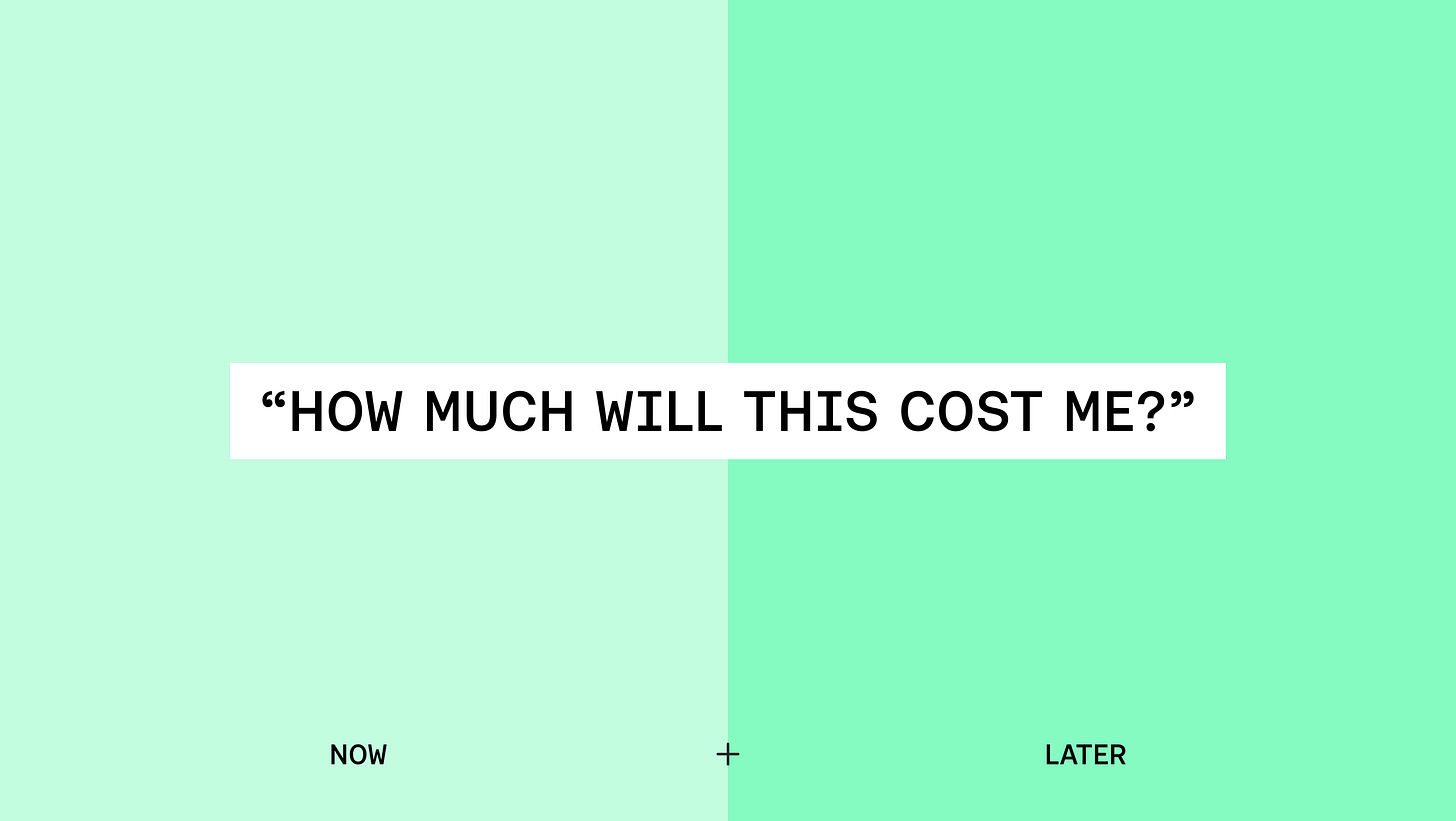Your pricing page has one job
When designing the pricing page for your SaaS product, be sure it answers this simple question.
We all know the importance of a homepage. If you’re anything like us, you obsess over it. And you know what? You should obsess over your pricing page, too.
"I believe the most important page on any company's website is their pricing page."
Matt goes on to say why: The pricing page is typically the only page that tells you:
What you’re buying
How you can buy it
What’s included
He’s spot on. Buyers need to know these things before making a purchase. It sounds simple, yet it’s easy to miss the mark, especially if you optimise for the wrong things.
Unfortunately, many do in the pursuit of growth. They try to push you to buy a particular plan (that you probably don’t need) or obscure how pricing works (just to get you in the door). And here’s the thing: when you push someone to buy more than they need or mislead them about how much they’ll pay, they’re more likely to churn.
My advice? Focus on ensuring your pricing page answers one question above all else—and does so quickly and clearly. I’ve learned this working on pricing pages for Equals' pricing models and many pricing projects over the past 15 years at Atlassian, Intercom, and Loom.
“How much will this cost me?”
Imagine this. You want to buy something. You’ve already been sold. Unless money is no object (one can dream), before you pull that purchasing trigger, you need to know, “How much does this cost?”. Whether it’s something as simple as a new pair of sneakers or a more involved purchase like a car, you’ll assess whether you can afford it first. I hope. 😅
B2B SaaS purchases are a little more involved. You don’t just need to determine whether you can afford it based on your needs today (end of month one); you need to know whether you’ll be able to afford it as your needs inevitably change in the future (end of month n).
Let’s say you’re buying customer support software. As a prudent buyer, you’ll want to future-proof your purchase because the switching costs can be high. You don’t want to have to train your internal teams to use new software (again) or unnecessarily change the customer-facing experience in quick succession.
Let’s assume the product you want to buy is priced based on features (e.g., Standard, Pro, and Enterprise plans) and the number of support agents who need access (e.g., $X per seat per month) – a fairly common approach.
When considering your purchase, you’ll want to estimate how big your support team might grow (i.e., extra seats needed) and how their needs might change (i.e., handling a higher volume of support requests). A well-designed pricing page would make it easy for you to answer, "How much will what we need cost us today and in the future as our needs evolve?"
Enabling future-proof purchasing
To enable buyers to estimate their cost today and in the future, your pricing page should do these three things:
Present the options buyers can choose from
Convey how pricing works and what’s included
Display the prices that determine monthly/annual cost
Let’s take Equals’ pricing page, for example:
There are no plans to choose from – every subscription gets all the features
Pricing is based on the number of seats (users) and the number and type of connectors (data sources) needed
Seats are priced at $39/mo each, and connectors from $99/mo each
In general, the simpler your pricing model, the easier this is. And in my experience, simpler pricing models tend to outperform more complex ones. That’s not to say complex pricing can’t work. It can. And it's not lost on me that every business is different. Some GTM motions/strategies may not make doing this possible. That said, I stand by this advice for SaaS businesses with transparent pricing models.
While your homepage is often the first stop in a prospect's buying journey, your pricing page can be their last – for better or worse. It will set the tone for any future engagement. A clear, honest, and easily understandable pricing page will likely shape a positive perception of your company and product. Conversely, a confusing or unclear pricing page may negatively impact their impression and decision to move forward or not. So, think about how much that might end up costing you.






So good! Thanks for writing this!